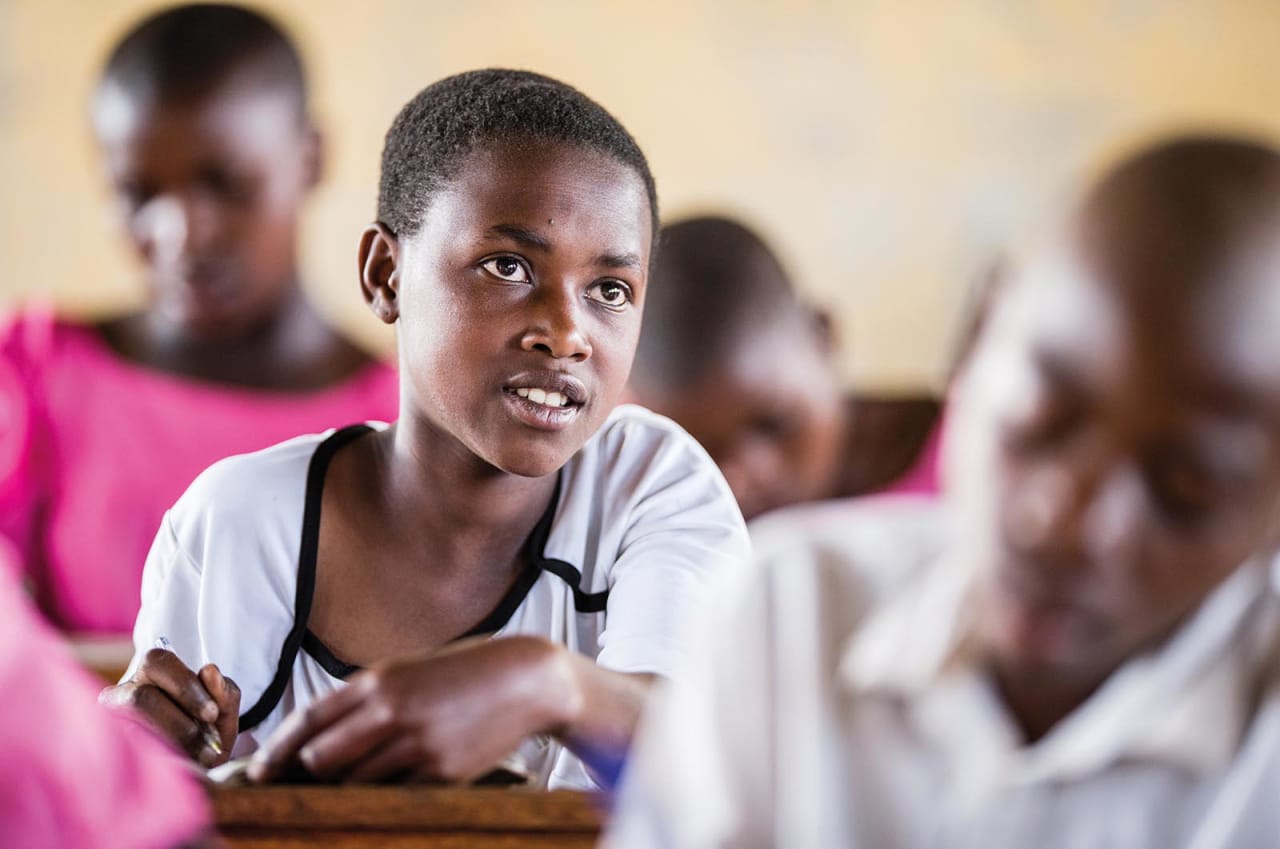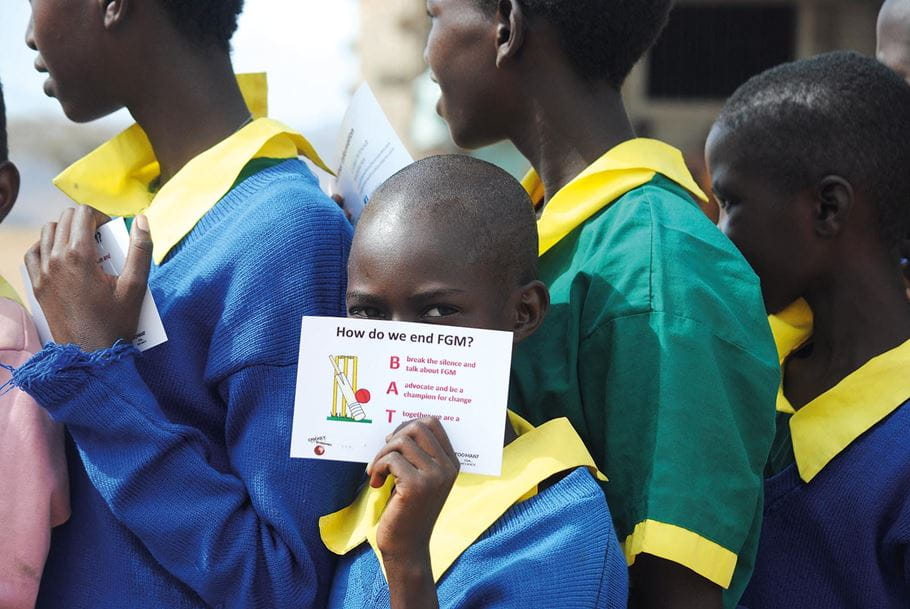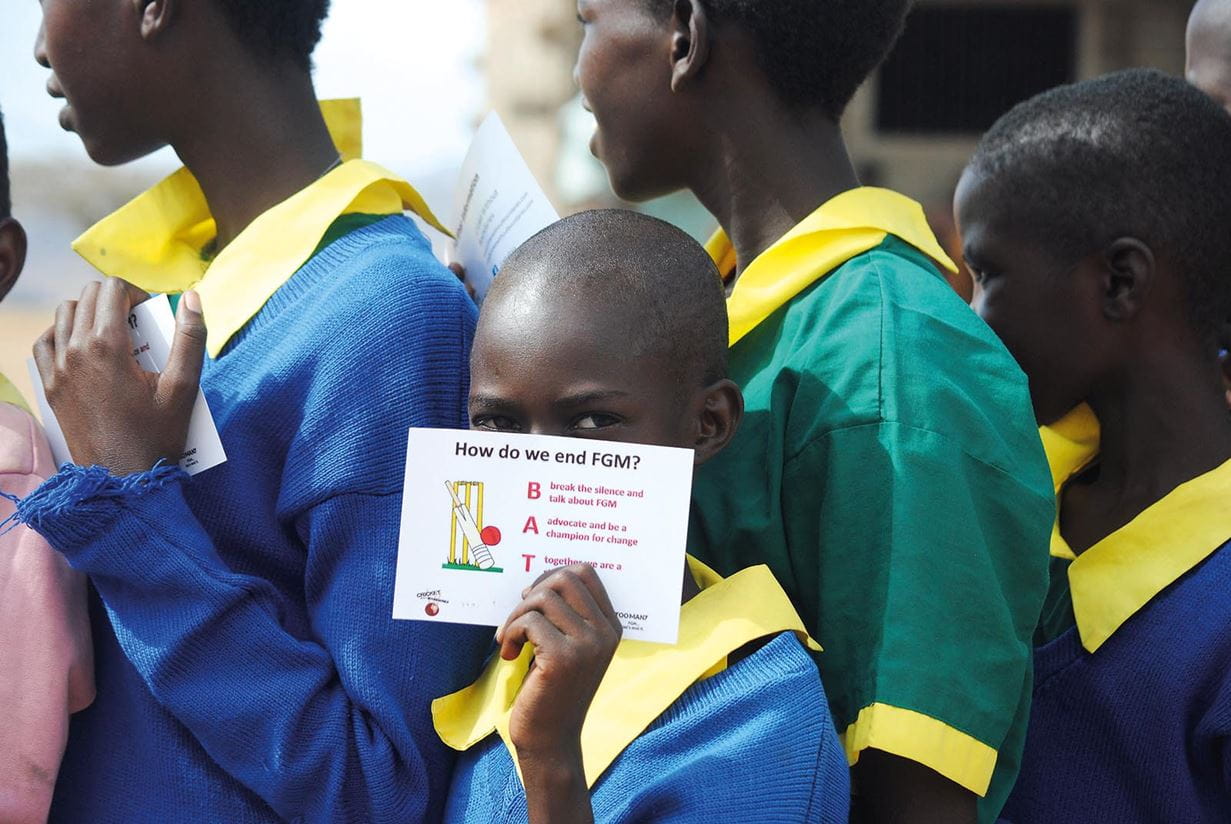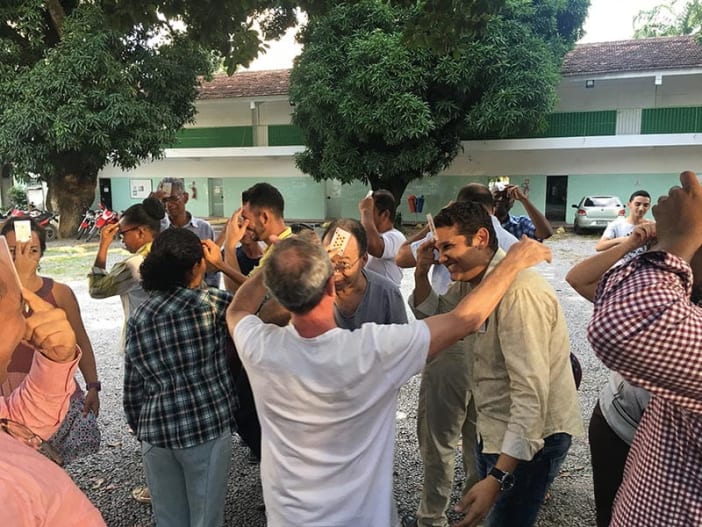A wide range of strategies have been used by different organisations to encourage people to abandon female genital mutilation/cutting (FGM/C). Often, a combination of strategies is used. But how effective are they? We explore a number of approaches below.
Alternative Rites of Passage
For ethnic groups where FGM/C is part of a rite of passage marking girls’ progression to adulthood, one approach that has shown success is Alternative Rites of Passage (ARPs). ARPs substitute the cutting part of the ceremonies with alternative rituals. These preserve the cultural traditions but eliminate the cutting.
However, ARPs will have limited impact unless they are accompanied by education that engages the whole community in collective reflection and leads to changes in the expectations of community members. The use of ARPs is further limited by the trend for communities to cut girls at a younger age and with less ritual.
Human rights/community dialogue programmes
A rights-based approach acknowledges that FGM/C is a violation of women’s and girls’ rights. This approach is sometimes used alongside other strategies to address FGM/C. The different parts of this theory include:
- Those carrying out the programme adopt a non-judgemental human rights approach.
- The facilitators conduct community awareness-raising of the harm caused by FGM/C.
- The entire community makes a joint decision to abandon FGM/C.
- The community makes a public affirmation that they are abandoning FGM/C.
- News of the decision is spread to neighbouring communities.
- There must be a supportive environment that enables change to happen, including the commitment of the government.
This community dialogue approach is based on the principle of listening and questioning between different generations, aided by a facilitator. It enables participants to reflect on their values, customs, traditions and expectations and to consider whether, when, how and under what conditions change should take place. In Ethiopia this approach is termed ‘community conversations’ and was adopted by the government in 2004 as a national approach to ending FGM/C.
This strategy has emerged as an important approach to eliminating FGM/C. However, when community conversations have taken place outside village communities, discussions did not lead to the necessary consensus to change social norms, as the participants had no sense of shared ownership.
Promoting girls’ education to oppose FGM/C
Education may be the best long-term strategy for ending FGM/C. Many NGOs engage schools with awareness-raising programmes on child rights and the dangers of FGM/C. There is a strong link between FGM/C and early marriage among some ethnic groups. Girls are cut prior to getting married and often drop out of school after being cut. The approach of promoting girls’ education encourages the girls to remain in education and in some cases equips them to speak out against FGM/C.
Educating FGM/C practitioners
Educating FGM/C practitioners and helping them find alternative sources of income may be successful in supporting them to end their involvement in FGM/C. However, it does not change the social convention that creates the demand for their services. Such efforts may be helpful alongside approaches that address demand for FGM/C, but alone they do not have the elements necessary to end the practice.
Education about the negative consequences
Informing communities and individuals of the health risks associated with FGM/C has been a key part of most of the strategies for encouraging people to abandon FGM/C. Convincing people in areas where FGM/C is very common about the health problems can be a challenge. Difficult childbirth and long recovery periods afterwards, which are often worsened by FGM/C, are frequently seen as normal. Communities may not, therefore, realise that FGM/C is contributing to these problems. Finding convincing ways to communicate this information in each context is vital.
For instance, in Tanzania, addressing the issue of lawalawa needs to be central to any attempt to eradicate FGM/C. Lawalawa is the local name given to certain infections and is wrongly thought to be cured or prevented by FGM/C. It is one of the main reported reasons for FGM/C continuing in many areas.
The legal approach
This approach consists of lobbying the government to make laws against FGM/C and advocating for such laws to be enforced effectively. The legal approach is most effective when accompanied by awareness-raising and community dialogue.
There can be negative effects if laws against FGM/C are introduced before society has changed its attitudes and beliefs, or if they are not accompanied by the necessary social support. In such cases, the laws may encourage people to continue the practice secretly or cross the border to undergo FGM/C in a neighbouring country. The fear of punishment under the law may also prevent people seeking medical treatment for health complications.
Media influence
In most African countries, radio is the most common form of media used by the majority of the population. Radio can be an important tool for encouraging people to abandon FGM/C. For example, in Mali, local radio stations were used to broadcast health professionals’ explanations of the medical complications of FGM/C, which resulted in an increase in women and girls seeking medical attention. Other strategies include newspaper articles, billboard posters, theatre performances and music. Global media campaigns are also useful for opening up a platform for local advocates, such as The Girl Generation, a global campaign that supports the African-led movement to end FGM/C.









